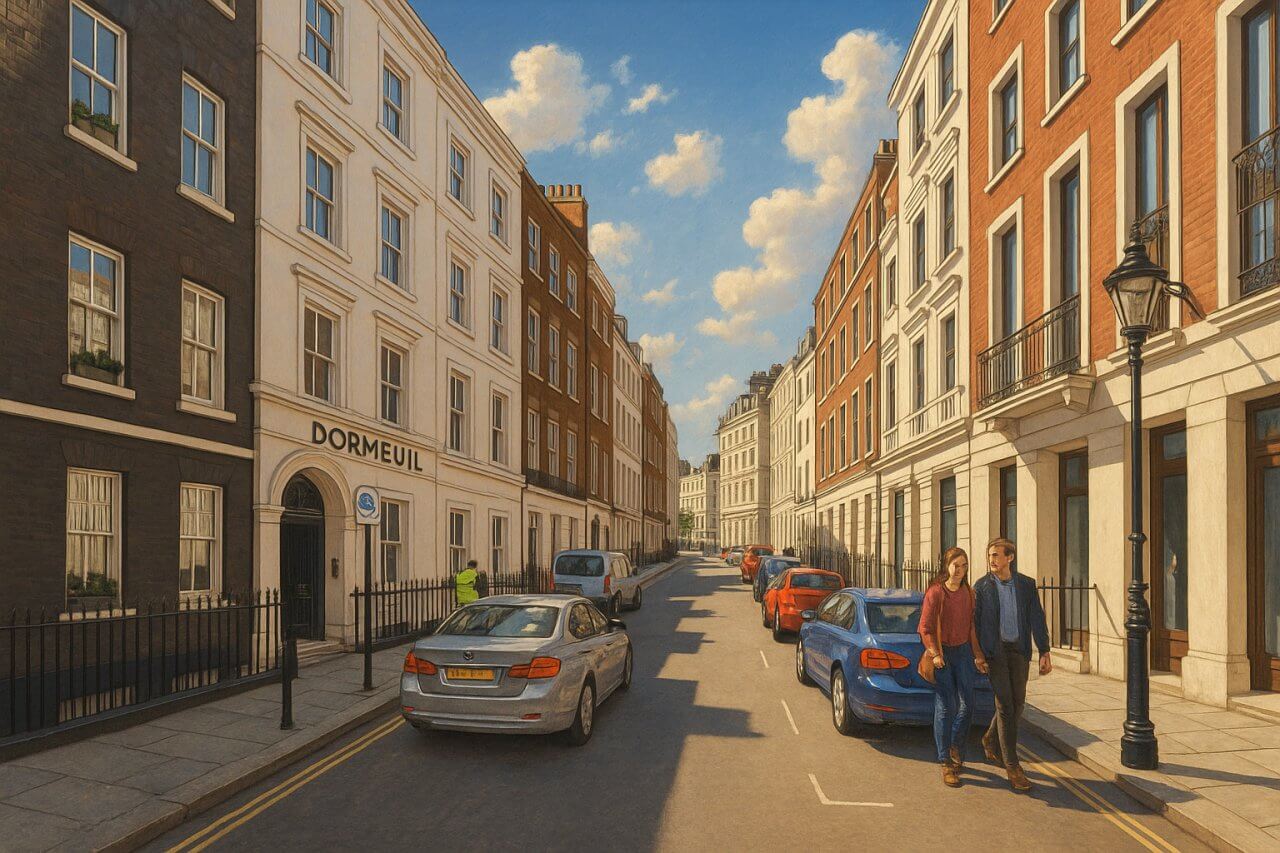
Sackville Street, London
Sackville Street is a short yet distinguished one-way street located in the heart of the City of Westminster, central London. It runs northwards from the historic thoroughfare of Piccadilly and terminates at Vigo Street, with traffic permitted to flow only in this northbound direction. Though compact in scale, the street plays an outsized role in London's rich urban tapestry, characterised by its Georgian elegance, exclusive premises, and central positioning.
Location and Layout
Sackville Street lies within the prestigious St James’s district, connecting Piccadilly at its southern end to Vigo Street at the northern boundary. The street is approximately 140 metres long (about 460 feet), forming a short but prominent link between two significant roads. Being a one-way street, vehicles may only enter from Piccadilly and exit onto Vigo Street. The thoroughfare is lined by elegant buildings, many dating back to the 18th and 19th centuries, and the street retains a refined, well-preserved appearance.
History and Etymology
Sackville Street was laid out in the early 18th century, during a period of significant development in the West End. It was created following the urban expansion that transformed the fields of St James’s into a highly sought-after residential and commercial area. The street first appears on maps in the early 1720s.
The street is named after the Sackville family, a noble English lineage with deep roots in the aristocracy. The most prominent association is with George Sackville, 1st Viscount Sackville, a military officer and politician in the 18th century. The name is pronounced SACK-vill, and in the International Phonetic Alphabet (IPA), it is rendered as /ˈsæk.vɪl/. 
Street Character and Architectural Style
The character of Sackville Street is one of refined tranquillity. It is relatively quiet compared to nearby arterial roads like Regent Street or Piccadilly. The buildings are mostly Georgian or early Victorian in style, with many having undergone careful restoration or sympathetic refurbishment. The street is home to several private offices, galleries, tailors, and boutiques, reflecting the area’s heritage of bespoke craftsmanship and high-end commerce.
The Sackville Gallery, a former fine art gallery once located at No. 28, was known for displaying works by Old Masters and early 20th-century British artists. Today, the street still maintains an air of exclusivity and sophistication.
Nearby Sights and Attractions
Sackville Street enjoys a prime location near several of London’s major cultural and retail destinations. Within walking distance, visitors will find:
- Royal Academy of Arts – located on Piccadilly, just a minute’s walk away.
- Jermyn Street – famed for men’s tailoring and traditional English shirtmakers.
- Fortnum & Mason – a historic department store established in 1707.
- Burlington Arcade – a luxurious, glass-roofed shopping arcade from the Regency era.
- Green Park – one of London's Royal Parks, located to the west of Piccadilly.
Real Estate and Property Information
Property along Sackville Street is considered premium real estate, consistent with its central location and elegant architecture. As of early 2025, commercial office space in the area typically commands upwards of £90 per square foot per annum, while residential values are estimated between £2,500 and £3,500 per square foot, depending on the condition and amenities offered.
This equates to roughly £26,900 to £37,700 per square metre. Residential flats tend to range between 1,000 and 2,500 square feet (approx. 93–232 sq m), with larger premises occasionally available in converted Georgian buildings. These figures place Sackville Street significantly above the London average, reflecting the exclusive nature of its location.
Transport Connections
Nearest Underground Stations
- Piccadilly Circus (Piccadilly & Bakerloo lines) – approximately 5 minutes’ walk to the east.
- Green Park (Piccadilly, Jubilee & Victoria lines) – around 7 minutes’ walk to the west.
- Oxford Circus (Bakerloo, Victoria & Central lines) – reachable within 10 minutes on foot.
Nearby Bus Stops
Several Transport for London bus routes serve Piccadilly, just at the south end of Sackville Street. Key routes include:
- Bus 14 – Putney Heath to Russell Square
- Bus 19 – Battersea Bridge to Finsbury Park
- Bus 38 – Victoria to Clapton Pond
- Bus 6 – Aldwych to Willesden
These connections make Sackville Street easily accessible for both tourists and professionals working in central London.
Fun Fact
A lesser-known detail about Sackville Street is its long history associated with bespoke tailoring and fine arts. In the 19th century, the street was home to several notable tailors who served members of the aristocracy and foreign dignitaries. The legacy of skilled craftsmanship continues to this day with a few discreet ateliers still occupying premises along the street, contributing to its genteel charm and upmarket ambiance.
Quick Facts
- Location: City of Westminster, central London
- Length: Approx. 140 metres (460 feet)
- Traffic Direction: One-way northbound (Piccadilly to Vigo Street)
- Named After: The Sackville family, pronounced SACK-vill (/ˈsæk.vɪl/)
- Character: Georgian and Victorian architecture, quiet and elegant
- Nearby Sights: Royal Academy of Arts, Jermyn Street, Fortnum & Mason, Green Park
- Real Estate: £2,500–£3,500 per sq ft (2025); flats ~1,000–2,500 sq ft
- Underground Stations: Piccadilly Circus, Green Park, Oxford Circus
- Bus Stops: Served via Piccadilly by Routes 6, 14, 19, 38
- Fun Fact: Historically known for tailoring and art galleries
Map of Sackville Street, London

Painting of Sackville Street, London (View image in full size)